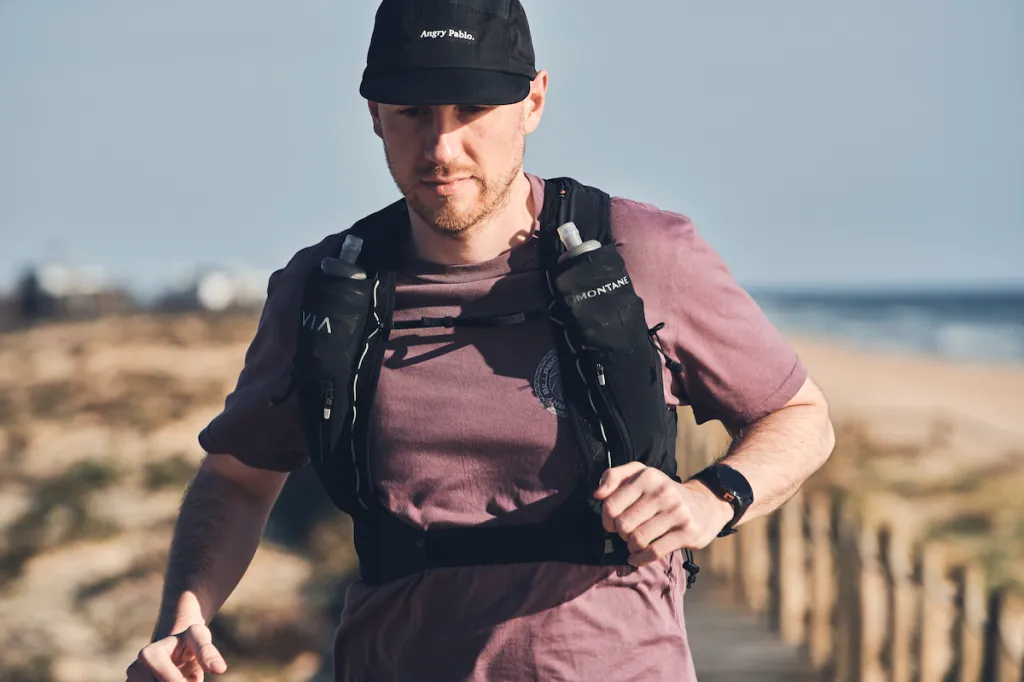Introduction
Running is exhilarating but staying hydrated is crucial. This is where running hydration packs come in handy. These packs are designed to help runners maintain hydration on the go, ensuring they have water at hand during their runs. According to the Mayo Clinic, staying hydrated is vital for maintaining energy levels and regulating body temperature.
In this article, we’ll explore the essential features of running hydration packs and provide tips to help you choose the right one. We’ll delve into why these packs are preferred over other hydration methods, detail their key features, and compare different options available on the market.
Why Use Hydration Packs for Running?
Hydration packs offer several advantages that make them a smart choice for runners:
- Convenience: Unlike handheld bottles, running hydration packs are worn like a backpack or vest, leaving your hands free for better movement and balance.
- Capacity: They often have larger water storage capacity, allowing for longer runs without needing to stop and refill.
- Balanced Weight Distribution: These packs distribute the weight evenly, reducing strain on your arms and shoulders.
Runner’s World provides an insightful overview of the best hydration packs highlighting these benefits. Hydration packs not only support hydration but can also store essentials like snacks, keys, and phones, making them a multifunctional tool for any runner.
By utilizing running hydration packs, you improve your running experience by staying comfortably hydrated and fully equipped with essentials, all while ensuring a hands-free run. Whether you’re training for a marathon or enjoying a casual jog, the right hydration pack makes all the difference.
Features of the Best Running Hydration Packs

When you’re in search of the best running hydration packs, several features are key to making the right choice. Let’s dive into these essential aspects:
- Size and Fit: It’s important the pack fits well without hindering movement. Adjustable straps can help tailor the fit, ensuring comfort on any run.
- Water Capacity: Consider how much water you’ll need based on the length of your runs. Many packs accommodate between 1 to 2 liters of water, but there’s variety to suit everyone.
- Material Quality: Durability is a must. Look for packs made with robust, leak-proof materials. Nylon and polyester are popular choices due to their strength and water resistance.
- Weight: A lightweight pack prevents extra fatigue. Choose a pack that feels light when loaded, balancing fluid capacity with overall weight.
- Storage Options: Extra pockets and compartments can be crucial for carrying keys, snacks, or a phone. Check the arrangement and accessibility of these pockets.
- Breathability: Mesh panels improve airflow, keeping you cooler during a run. This feature is particularly useful in warm climates.
These features will ensure that you select a hydration pack that not only provides ample hydration but also supports your performance comfortably.
Hydration Vest vs. Running Hydration Vest: What’s the Difference?

Understanding the difference between a general hydration vest and a running hydration vest is critical for making the right purchase. Here’s a breakdown of the distinctions:
- Design: Running hydration vests are ergonomically designed to minimize movement and reduce bounce during running. They tend to have a snugger fit compared to general hydration vests.
- Weight Distribution: The design of running vests minimizes water weight imbalance, promoting ease in running, a point further highlighted in the advantages of weight distribution of hydration packs.
- Fit: Running hydration vests typically offer a tighter fit to avoid chafing and to keep the pack secure during high-impact activities. Adjustable straps help achieve this personalized fit.
- Purpose: While general hydration vests serve various outdoor activities, running hydration vests specifically cater to runners, enhancing both comfort and functionality. This specificity often makes them favorable in scenarios where precise weight and fit are essential.
When deciding whether to opt for a running hydration vest over a general vest, consider your primary activity. If running is your focus, a running hydration vest is likely the best choice to support your needs efficiently.
Top Running Hydration Packs for Different Runners
Choosing the right running hydration pack can make all the difference during your runs. With so many options available, it’s important to find one that matches your specific needs. Here are some of the top-running hydration packs in the market, addressing a range of preferences:
- CamelBak Zypher Pro Vest
- Water Capacity: 1.5 liters
- Special Features: Lightweight and includes an adjustable stash pocket.
- Ideal For: Long-distance runners who need a balance between capacity and comfort.
- Salomon Advanced Skin 12 Set
- Water Capacity: 1.5 liters or more with soft flasks
- Special Features: Body-hugging fit with multiple pockets for storing essentials.
- Ideal For: Ultra marathoners needing quick access to gear and nutrition during long runs.
- Nathan VaporAir 2.0
- Water Capacity: 2 liters
- Special Features: Comes with multiple front pockets for gels and phones.
- Ideal For: Runners who require adequate hydration without compromising speed.
When choosing your hydration pack, consider factors such as:
- Preference for fit: Waist pack, vest, or backpack style
- Running distance: The longer the distance, the larger the capacity usually required.
- Comfort and adjustability: Look for adjustable straps for a snug fit.
- Extra storage needs: Pockets for nutrition, phone, and keys are often necessary for comfort during runs.
For more detailed information on the best running hydration packs, visit Gear Junkie.
Tips for Choosing the Best Running Hydration Vest
Selecting the ideal running hydration vest doesn’t have to be complicated. Follow these simple tips to ensure you pick the best fit for your activities:
- Consider Running Distance:
- Short Runs: Opt for minimal vests or handheld bottles if you prefer less weight.
- Longer Runs: Look for ultra running vests with a higher capacity and more pockets.
- Think About Climate and Weather:
- Hot Weather: Choose vests with better ventilation and large water capacity to stay cool.
- Colder Weather: A vest with extra storage for layers might be necessary.
- Check Material Quality:
- Durable materials will ensure the vest lasts longer and withstands rigorous use.
- Look for moisture-wicking materials to stay dry.
- Review Useful Extras:
- Reflective elements for evening or early morning runs.
- Easy access pockets for gels, phone, or keys.
Choosing a running vest should ultimately come down to what feels most comfortable and practical for your goals. Not only will these vests ensure you stay hydrated, but they will also help you keep focused on your run.
Maintaining Your Hydration Pack
Taking care of your running hydration packs properly is crucial for ensuring they last long and work efficiently. Here are some advanced tips for maintaining your hydration pack, focusing on aspects not commonly emphasized:
Do’s:
- Deep Clean Occasionally: Use special cleaning kits available for hydration systems for an occasional deep clean.
- Try Specialized Drying: Use a specialized hydration pack dryer to ensure thorough drying.
Don’ts:
- Don’t Ignore Seals: Check the sealing mechanisms regularly to maintain leak-free performance.
Following these tips will help keep your hydration pack in top condition, ensuring you stay hydrated effectively during your runs.
Tips for Using Your Hydration Pack During Runs
Using your hydration pack correctly can significantly enhance your running experience by making hydration both effective and hassle-free. Here are some useful tips:
- Practice Hydration: Start using your pack on shorter runs to get comfortable with drinking while moving.
- Adjust Fit: Make sure the hydration vest or pack is snug to minimize bouncing and discomfort.
- Plan Your Hydration: Determine your hydration needs based on the weather and your planned running distance.
- Sip Regularly: Rather than waiting until you’re thirsty, take small sips throughout your run to maintain optimal hydration levels.
- Secure Properly: Keep loose straps and excess fabric secured to avoid any distractions during your run.
- Keep It Balanced: Distribute weight evenly by placing gels, snacks, or small gear items in pockets if available.
- Hydration Strategy: Develop a strategy for filling and refilling your hydration pack during longer races or runs where water sources are available.
Using these strategies can help you maximize comfort and hydration during your runs, ensuring you get the most out of your hydration pack.










